Hybrid parentage U. glabra × U. minor | Cultivar Ulmus × hollandica Rank Species | |
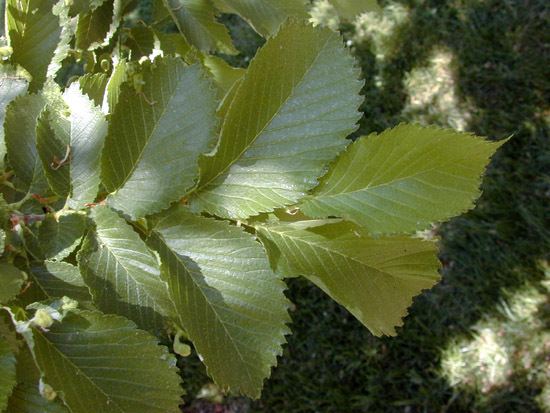 | ||
Similar Ulmus × hollandica 'Wredei', Ulmus 'Camperdownii', Ulmus minor, Ulmus minor 'Atinia', Ulmus glabra | ||
Ulmus hollandica
Ulmus × hollandica , often known simply as Dutch elm, is a natural hybrid between Wych elm Ulmus glabra and field elm Ulmus minor which commonly occurs across Europe wherever the ranges of the parent species overlap. In England, according to the field-studies of R. H. Richens, "The largest area [of hybridization] is a band extending across Essex from the Hertfordshire border to southern Suffolk. The next largest is in northern Bedfordshire and adjoining parts of Northamptonshire. Comparable zones occur in Picardy and Cotentin in northern France".
Contents
- Ulmus hollandica
- Description
- Pests and diseases
- Cultivation
- Notable trees
- The hybrid elm in art
- Cultivars
- North America
- Europe
- Australasia
- References
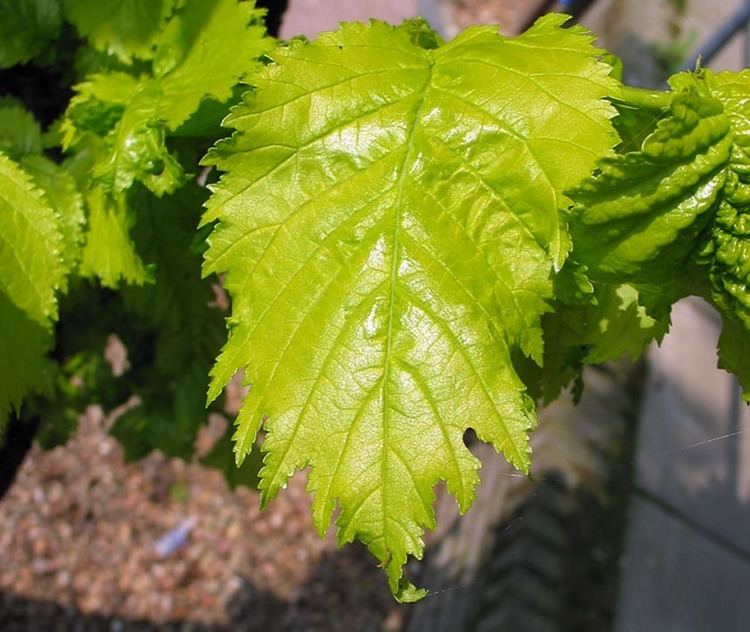
Ulmus × hollandica hybrids, natural and artificial, have been widely planted elsewhere by man.
Description
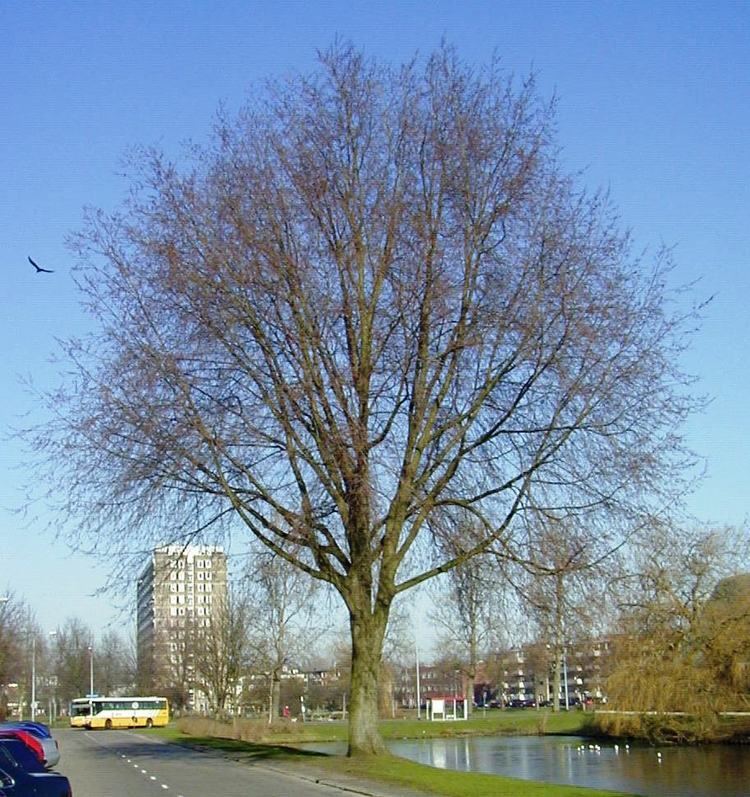
In form and foliage, the trees are broadly intermediate between the two species. F1 hybrids between Wych and field elm are fully fertile, but produce widely variant progeny. Many also inherit the suckering habit of their field elm parent. Both Richens and Rackham noted that examples in the East Anglian hybridization zone were sometimes pendulous in form.
Pests and diseases
Some examples of the hybrid possess a moderate resistance to Dutch elm disease.
Cultivation
The hybrid has been introduced to North America and Australasia.
Notable trees
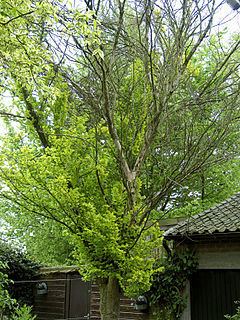
The great elm in the Grove of Magdalen College, Oxford, photographed by Henry Taunt in 1900 and said by Elwes to be the largest elm in Great Britain, was long believed to be a wych elm but was found on examination by Elwes and Henry to be a Huntingdon-type hybrid that at c.300 years old pre-dated the cultivation of Huntingdon Elm. When it blew down in 1911, it had been 43.7 metres (143 ft) high and 8.3 metres (27 ft) in girth and comprised an estimated 81 cubic metres (2,900 cu ft) of timber. It was considered the largest tree of any kind in Britain, and possibly the largest tree north of the Alps.
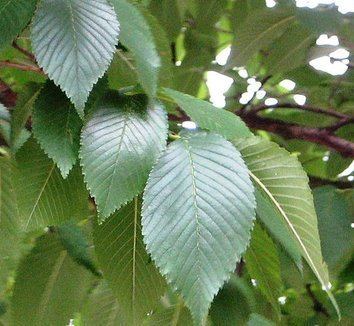
With a girth of 6.9 m (22.6 ft) and a height of 40 metres (130 ft), the Ulmus × hollandica hybrid elm on Great Saling Green, Great Saling, near Braintree, Essex, reckoned at least 350 years old, was reputedly the largest elm in England, before succumbing to Dutch Elm Disease in the 1980s. Elwes and Henry (1913) misidentified as U. nitens (Ulmus minor).
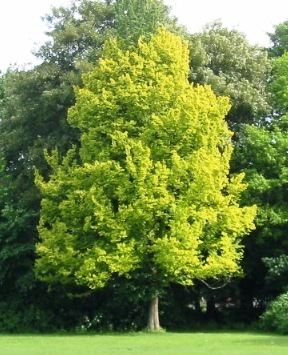
Examples of mature survivors in the East Anglian hybridisation zone include those near Royston, Hertfordshire, designated 'Elm of the Year, 2004' by Das Ulmen Büro. An example of the weeping form survives at Actons Farm, Sawbridgeworth, Hertfordshire.
There are two notable TROBI Champion trees in the British Isles, one at Little Blakenham, Suffolk, measuring ? high by 160 centimetres (5.2 ft) d.b.h. in 2008, the other at Nounsley, Essex, 17 metres (56 ft) high by 150 centimetres (4.9 ft) d.b.h. in 2005.
The hybrid elm in art
The elms in the Suffolk landscape-paintings and drawings of John Constable were "most probably East Anglian hybrid elms ... such as still grow in the same hedges" in Dedham Vale, Flatford and East Bergholt. Elm trees in Old Hall Park, East Bergholt [4] is often considered the finest of Constable's elm-studies.
Cultivars
At least 30 cultivars have been recorded, although over half have now been lost to cultivation because of Dutch elm disease:
North America
Europe
Australasia
North America
None known.
